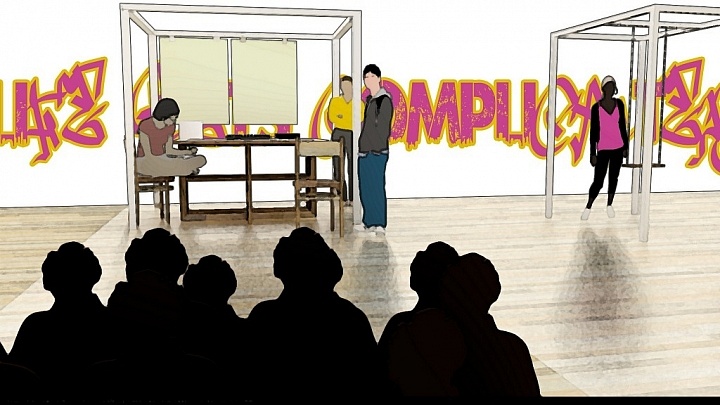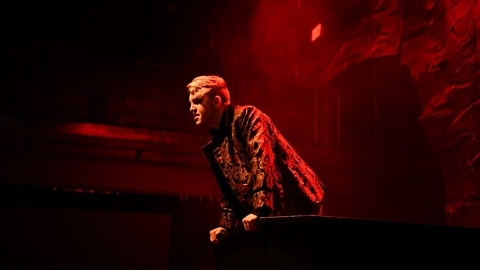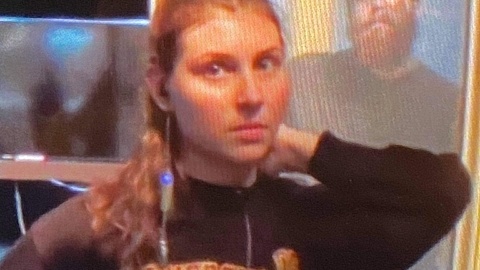For nearly two years, theatre lovers have felt entrapped in their own little purgatories. Artists have been unable to perform on stages, and audiences been...
Emma McCormick and Kristina Ojaperv write,
As our journey into the evolving form of embedded criticism begins, we feel the title of Jordi Mand’s new work sums up our first impressions – This Will Be Excellent.
Embedded criticism provides an inside look at the process of a show’s creation, through discussing the initial vision with the director or creative team, witnessing the rehearsal process and final preparations, and finally seeing the production come to fruition in front of audiences. According to our professor Karen Fricker’s article in the Canadian Theatre Review “Going Inside: The New-Old Practice of Embedded Criticism”, the goal is not to judge the piece, but to explore the symbiosis in the processes of artists and critics, and enhance public knowledge of the art form. Being recently introduced into the critical landscape (first occurring in the early 2010s), embedded criticism is largely undefined in its scope, potential, and value in understanding the diverse practices of both theatre and criticism.
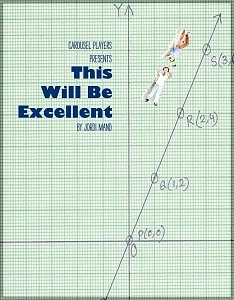
This Will Be Excellent Production Poster
It is this critical form that we will be engaging in with Carousel Players’ upcoming production This Will Be Excellent, directed by Erin Brubacher. We sat down with Brubacher for an interview on what her aspirations were for the upcoming production, and what challenges she foresees. Carousel Players has long been in the business of introducing professional theatre to school-aged children – 46 years, to be exact. Brubacher intends build upon the company’s history by presenting a challenging play without simplifying its message for the school-aged audience.
Excellent follows Daniel, a sixth grader struggling to balance both the demands of his school and home life with the desire for freedom and self-expression. Most importantly to Brubacher is that Excellent is not focused on solving the play’s “issue”. “It’s actually just a play about the inner worlds of these young people,” she says. “It’s a play that asks you to get more comfortable with disappointment, and it’s not tied in a bow.” Presenting the unresolved and the complex to an audience that often receives trite moralistic lessons provides the opportunity to engage students in the narrative. Brubacher’s approach appears to acknowledge the potential for students to think critically, and to engage.

Design Concept Illustration by Set/Costumer Anahita Debonehie
Embracing the unknowns in each performance also interests Brubacher. Excellent’s run is almost entirely performed in schools, and the inconsistency of both space and audience arise as particularly exciting challenges. “Their attendance has been imposed,” Brubacher reflects. “So it’s kind of a risk.” In Brubacher’s vision, the actors will be highly attuned to the energy of the room, and she is aware of the possibilities, and challenges that this inevitably brings. Some schools, she notes, may respond enthusiastically, some hysterically, some not at all. “There’s the possibility they may never sit down,” she only half jokes. Plans to utilize this unpredictable energy are many, including audience address, audience interaction, and even the integration of school curriculum – Daniel reading the same book onstage as the real life sixth graders, for example.
Technology has a large presence in the show, from the characters’ obsession with the fictional rapper Arrow to the integration of live music mixing. “The only preconceived notion I had going into this was that I would like to cast not necessarily an actor but a DJ,” Brubacher explains, excitedly. The actor, Fly Lady Di, will also serve as Excellent’s sound designer and operator.
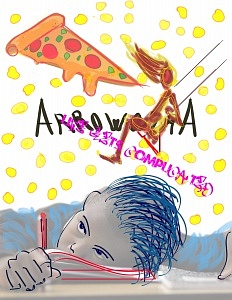
Design Concept Illustration by Set/Costume Designer Anahita Debonehie
Brubacher is interested in how current hip-hop and rap music can add emotional impact. “The idea is that we never hear Arrow’s music,” Brubacher says, explaining that the real life musical references included would have influenced Arrow’s style. Something, she hopes, that the kids will recognize “and get excited by.”
The main characters, both 11-year-olds, are played by adult actors, and Brubacher wants the actors to play a version of themselves, rather than “playing children”. She acknowledges, however, that the actors playing Daniel and Izzy – Theo Gallaro as Daniel and Maddie Bautista as Izzy – “have a real youth about them” and Brubacher is confident in their abilities to honestly portray their younger characters. She is curious as to the reception from audiences comprised of children, when the actual visual age is going to be more evident.
Already, the conversation about Excellent is abuzz with potentials, what ifs, and exciting future developments. However, we were keenly aware that our conversation with Brubacher was merely the first step in a long journey toward the final performance product. How the DJing works in the variety of spaces, how the audiences react, and the daily challenges of performing for school audiences are yet to be faced. In our next post, we will be discussing the development of these exciting seeds of inspiration, and how they grow into the final product. We are certain that the process will be informative, explorative, and maybe even excellent.
Related Posts
It’s been a few weeks since the final performance of Brock University Department of Dramatic Arts’ Fall Mainstage, Scenes from an Execution. Closing off their...
Here’s Holly Hebert’s final solo vlog from behind the scenes of the Fall 2020 DART Mainstage, Scenes from an Execution. She and Asenia will round off this...
It’s been a few weeks since the final performance of Brock University Department of Dramatic Arts’ Fall Mainstage, Scenes from an Execution. Closing off their...
Here’s Holly Hebert’s final solo vlog from behind the scenes of the Fall 2020 DART Mainstage, Scenes from an Execution. She and Asenia will round off this...
Leave a Reply (Cancel Reply)
Twitter Feed
Blogroll
DARTcritics.com is partially funded by the Marilyn I. Walker School of Fine and Performing Arts, in support of student learning; experiential education; student professionalization; public engagement with the teaching, learning and production activities of the Department of Dramatic Arts; new ways of thinking; and the nurturing of links with our communities.

